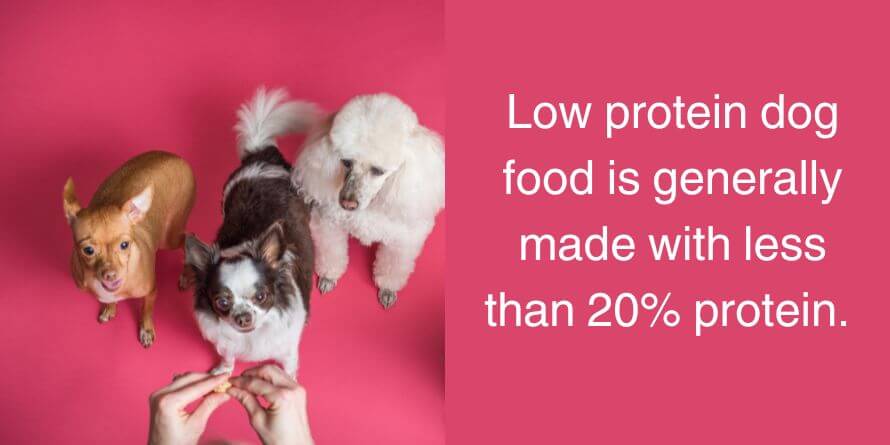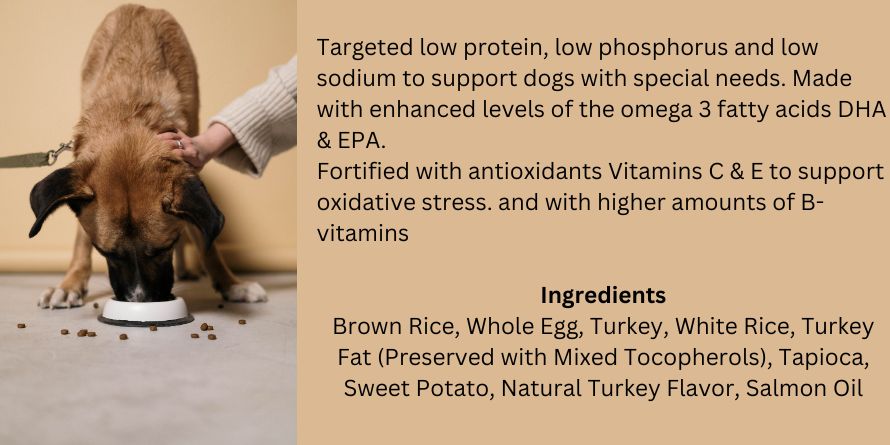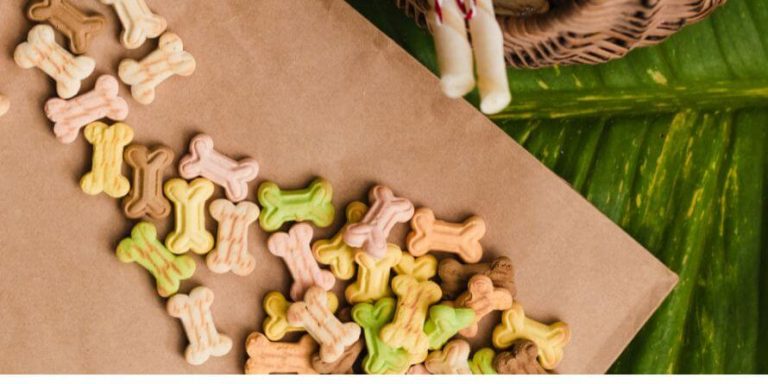How to make low protein dog food for your dog. Low-protein dog food can be made by using alternative protein sources that are lower in protein than traditional sources such as meat. These include ingredients like peas, lentils, and sweet potatoes.
To make low-protein dog food, start by selecting a low-protein base ingredient. Good options include cooked or canned peas, lentils, or sweet potatoes. These ingredients should make up the majority of the recipe.
Next, add a small amount of a protein source that is lower in protein than traditional options. Good options include eggs, cottage cheese, or yogurt. These ingredients should make up no more than 10-15% of the recipe.
Then, add a source of healthy fats, such as olive oil or coconut oil. These ingredients should make up around 5-10% of the recipe. Finally, add any additional vitamins and minerals that may be needed for a balanced diet, such as a multivitamin supplement or bone meal.
It is important to note that a low-protein diet may not be suitable for all dogs, and it is best to consult with a veterinarian before making any major changes to a dog’s diet.
Table of Contents
How to make low protein dog food; It will make your day easy.
How do you make your low-protein dog food? Here are some of the low-fat, low-protein homemade dog food recipes. This recipe is a basic example and can be adjusted according to the dog’s specific nutritional needs and the ingredients’ availability.

Here is a recipe for a portion of simple low-protein dog food: how to make low-protein dog food. If you desire protein food for dogs, you can follow way out.
Guide to Creating Low Protein Dog Food
An Essential Resource Creating low-protein dog food requires careful consideration to ensure it meets your pet’s specific dietary needs. By following this comprehensive guide on how to make low-protein dog food.
You can provide a tailored and suitable diet for your furry companion. Remember, while these recipes are low in protein, they should not replace the entirety of your dog’s protein intake and may not be.
Ingredients:
- 2 cups cooked peas
- 1/2 cup cooked lentils
- 1/2 cup mashed sweet potatoes
- 1/4 cup cottage cheese
- 2 tablespoons olive oil
- 1 teaspoon bone meal (or a multivitamin supplement)
Instructions
- In a large mixing bowl, combine the cooked peas, lentils, and sweet potatoes.
- Stir in the cottage cheese and olive oil.
- Add the bone meal or multivitamin supplement and mix well.
- Serve immediately or store in an airtight container in the refrigerator for up to 3 days.
- The dog’s diet must be balanced, so consult with a veterinarian or professional nutritionist before making any significant changes to it.
It is also important to feed the correct amount of food to maintain a healthy weight and monitor the dog’s health to ensure that the low-protein diet is working as it should and not causing any health problems.
The low-protein dog food recipes rotate different protein sources over time to ensure that your dog is getting a balanced diet.
It is also important to note that a homemade diet may not provide all the necessary nutrients for a dog and it is important to consult with a veterinarian or professional nutritionist to ensure that the diet is balanced and complete.
It is recommended that a homemade diet be fed under the guidance of a veterinarian or professional nutritionist to ensure that the diet is balanced and complete and that the dog is getting the correct amount of food to maintain a healthy weight.

Low Protein Meats for Dogs
Fish (Best Fish Food for Dog): Fish such as cod, haddock, and tilapia are lower in protein than other meats, but still provide a good source of lean protein. If your dog likes this is the best dog water bowls for sloppy drinkers.
- Turkey: Turkey is a lean protein source that is lower in fat and calories than chicken or beef, making it a good choice for dogs.
- Rabbit: Rabbit is a lean, low-fat protein source that is also low in calories.
- Duck: Duck is another lean protein source that is lower in fat and calories than other meats.
- Quail: Quail is a lean, low-fat protein source that is also low in calories.
- Venison: Venison is a lean protein source that is lower in fat and calories than beef or pork, making it a good choice for dogs.
It is important to note that some fish may have high levels of mercury and other toxins, so it’s important to consult with a veterinarian before feeding your dog fish or to choose species that are known to have lower levels of contamination.
Also, feeding raw meat to dogs can pose a risk of foodborne illnesses, so it’s important to always cook the meat thoroughly before feeding it to your dog. Which is good for dogs? Pumpkin vs Sweet Potato for Dogs.
Homemade low-protein dog food for kidney disease
Kidney disease is a worse disease condition in dogs. It can manage to reduce the intake of certain minerals like phosphorus and also can ensure adequate hydration. So, the vet-approved homemade dog food recipes for kidney disease are developed to the specific needs.
You know every dog is unique and may be suitable for one to others. But before making any change of diet, please consult with your vet to ensure your safety. Now, here are simple vet-approved homemade recipes for kidney disease in dogs.

Recipe: Chicken and Rice Ingredients. Daily Portions Listed.
For 15 lb Spayed/Neutered Dog – 480 kcal per day
- 53 g or 1 7/8 oz cups Chicken, broilers or fryers, breast, meat only, cooked, roasted
- 25 g or 5 5/8 tsp Oil, canola
- 4.8 g or 5 1/5 mL Nordic Naturals Omega-3 Pet Liquid
- 99 g or 5/8 cup Rice, white, long-grain, regular, unenriched, cooked without salt
- 0.38 g or 1/16 tsp Morton Iodized Salt
- 3.5 g Wholistic Pet Organics
For 45 lb Spayed/Neutered Dog – 1089 kcal per day
- 121 g or 4 1/4 oz – Chicken, broilers or fryers, breast, meat only, cooked, roasted
- 59gor13 tsp – Oil, canola
- 10.9 g or 11 9/10 mL – Nordic Naturals Omega-3 Pet Liquid
- 217 g or 1 3/8 cup – Rice, white, long-grain, regular, unenriched, cooked without salt
- 0.38 g or 1/16 tsp – Morton Iodized Salt
- 7.8 g Wholistic Pet Organics
For 70 lb Spayed/Neutered Dog – 1522 kcal per day
- 170 g or 6 oz – Chicken, broilers or fryers, breast, meat only, cooked, roasted
- 81 g or 18 tsp – Oil, canola
- 15.3 g or 16 3/5 mL – Nordic Naturals Omega-3 Pet Liquid
- 306 g or 1 15/16 cup – Rice, white, long-grain, regular, unenriched, cooked without salt
- 0.38 g or 1/16 tsp – Morton Iodized Salt
- 10.8 g Wholistic Pet Organics
Instruction: First, you must mix all the ingredients in a large bowl until fully combined. Then divide the mixture into suitable serving sizes for your dog. Also, when time to eat serve them at a slightly warmed temperature.

FAQ on dog food brands with low protein
What can I make my dog for a low-protein diet?
For a dog on a low-protein diet, you can make homemade meals using ingredients such as boiled potatoes, sweet potatoes, rice, and vegetables like carrots, green beans, and pumpkin.
You can also include small amounts of lean meats like chicken or turkey, but they should not make up the majority of the diet. It’s important to consult with a veterinarian before making any significant changes to your dog’s diet.
They can recommend specific dietary needs and help you create a balanced meal plan that meets your dog’s nutritional requirements.
What can I cook for my dog who has kidney problems?
If your dog has kidney problems, it’s important to consult with a veterinarian before making any changes to its diet. They may recommend a specialized diet that is low in protein and phosphorus, as well as moderate in sodium and potassium.
Here are some options for homemade meals that may be appropriate for a dog with kidney problems:
- Boiled chicken or turkey (without skin) and white rice
- Boiled or steamed fish (such as cod or haddock) and vegetables (such as green beans, carrots, and squash)
- Cooked sweet potatoes and green beans
- Cooked oatmeal with low-fat cottage cheese
- It’s also important to monitor your dog’s water intake and provide fresh water at all times.
It’s important to note that homemade diets should be balanced and complete to ensure all the necessary nutrients for your dog’s health, so consulting with a veterinarian or a professional canine nutritionist is recommended, they can provide you with a specific recipe that will be tailored to your dog’s needs.
What is considered a low protein in dogs?
The protein requirement for dogs can vary depending on their age, size, and activity level. A low-protein diet for dogs is generally considered to contain between 10-15% protein on a dry matter basis (DMB).
However, it is important to note that a low-protein diet is not always necessary or appropriate for all dogs. In certain cases such as dogs with kidney disease, a lower protein diet may be recommended to help manage their condition.
It’s also important to note that the source of the protein is also important, high-quality protein sources such as animal-based protein are more easily digestible and provide a more complete amino acid profile for dogs, compared to plant-based proteins which are often less digestible and may not provide all the necessary amino acids for dogs.
It’s important to consult with a veterinarian or a professional canine nutritionist before making any changes to your dog’s diet, especially if your dog has any specific health concerns.
They can help you determine the appropriate protein level for your dog and provide you with a balanced meal plan that meets your dog’s nutritional requirements.
What are the most low-protein foods?
Some examples of low-protein foods for dogs include:
- Vegetables: carrots, green beans, squash, pumpkin, sweet potatoes
- Carbohydrates: white rice, brown rice, barley, oats, pasta
- Fruits: apples, blueberries, strawberries, pears
- Dairy: low-fat cottage cheese, plain yogurt
- Meat: skinless chicken breast, turkey breast, white fish (such as cod or haddock)
Final Words
It’s important to note that while these foods are low in protein, they may not be appropriate for all dogs and should not be used as the sole source of protein in a diet.
A balance of protein, carbohydrates, and fats is essential for maintaining good health in dogs.
Additionally, a homemade diet should be balanced and complete to ensure all the necessary nutrients for a dog’s health, so consulting with a veterinarian or a professional canine nutritionist is recommended before preparing any homemade diet.
I think you get many ideas about how to make low-protein dog food. If you are interested you can read our other article, How to Stop Your Dog From Peeing in the House.




